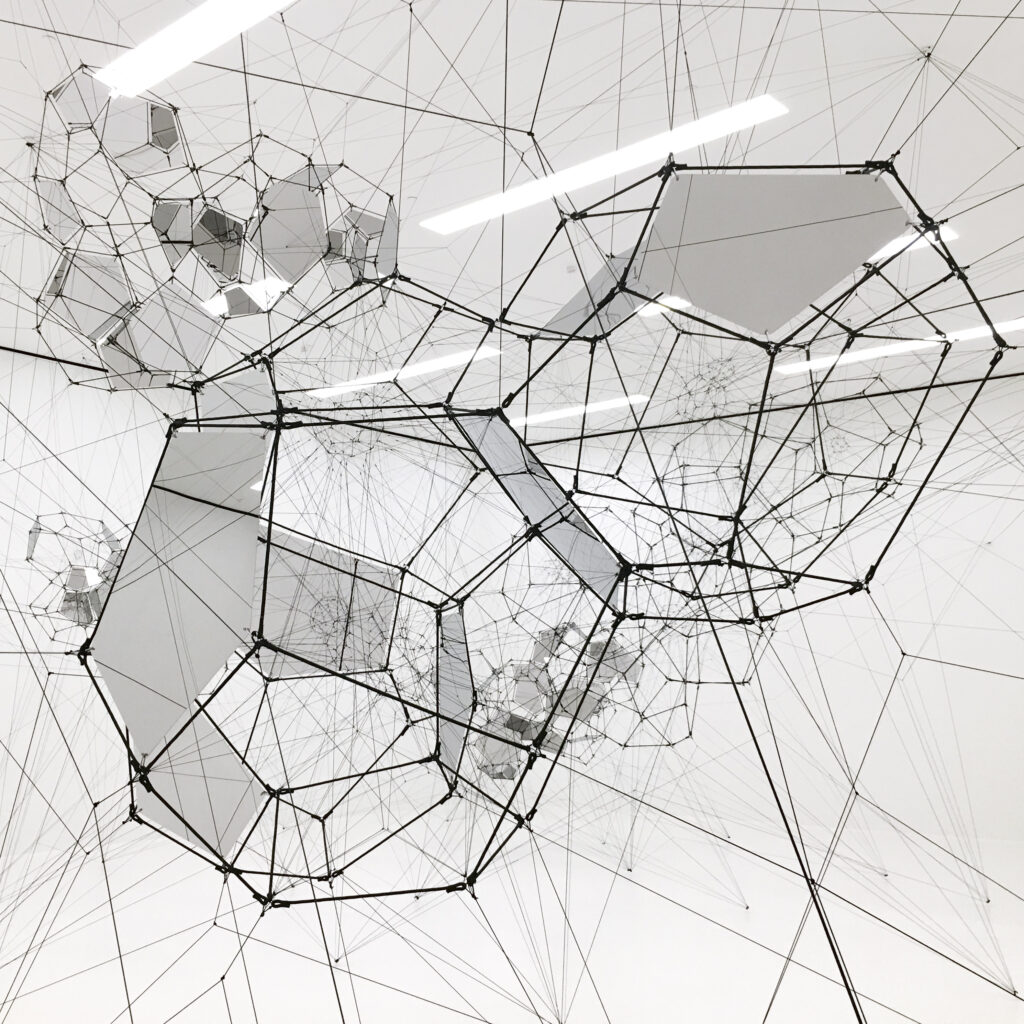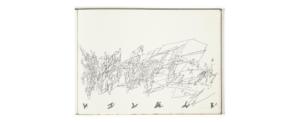
Tomás Saraceno: Stillness in Motion — Cloud Cities, 2016 (installation view, SFMOMA); photo: © Studio Tomás Saraceno
The Architecture + Design gallery has been overtaken by artist Tomás Saraceno’s site-specific project, a model for a utopian airborne city of the future that reconfigures humanity’s dependence on fragile ecologies and instead offers a network of inhabitable spaces formed like clouds above our heads.
Saraceno’s Berlin studio is dedicated to exploring the points of intersection between the built and the natural world, and his work provokes a fluid reading of scale and size—a relative continuum of spatial engagement. From large-scale inhabitable installation works that highlight self-organizing social systems, to small-scale architectures such as the intricate structures of a community of cyrtophora citricola spiderlings, Saraceno’s research-based practice is technically complex and rigorously executed.
These projects are inherently architectural, yet Saraceno sees his practice as one that transcends the restrictions of any one discipline. Space is his primary medium, whether he is creating, representing, or suggesting it in his installations, or provoking its social, political, and cultural boundaries.

Tomás Saraceno: Stillness in Motion — Cloud Cities, 2016 (installation view, SFMOMA); photo: © Studio Tomás Saraceno
Born in Argentina and trained as an architect in Buenos Aires and Frankfurt, Saraceno quickly aligned himself with the great experimental thinkers that exploded the boundaries of architecture in the mid-twentieth century. These practitioners’ output varied widely — from Italo Calvino’s lyrically wrought fictional universe, to the structural explorations and hypotheses of Buckminster Fuller; from the groundbreaking countercultural movement embodied by the work of Ant Farm, to the futuristic urban visions of Archigram in London and Superstudio in Florence. Commonalities emerge between these pioneers, who have all been a longstanding focus of SFMOMA’s Architecture + Design Collection, and Saraceno’s own work.
Perhaps even clearer is the resonance between Saraceno’s work and the architecture of Lebbeus Woods, who, like Fuller and Superstudio, proposed floating utopian cities that would establish non-hierarchical social spaces. These self-contained structures would allow for minimal impact on the environment — in turn highlighting the destructive nature of humanity’s effects on Earth in the current epoch and proposing an alternative future. Similarly, Saraceno’s ongoing Cloud Cities project lifts us into a new era, hovering in the atmosphere and propelled not only by environmental concerns but also by deep sociological motives, encouraging a more universal human interconnectivity.

Tomás Saraceno: Stillness in Motion — Cloud Cities, 2016 (installation view, SFMOMA); photo: Katherine Du Tiel
Saraceno’s work is rooted in a history of experimentation across disciplines, drawing from physics, biology, cosmology, and engineering, and reinterprets the large and small-scale architectures of spider-web morphology, soap-bubble geometry, gravitational fields, constellations, and networked matrices. These visually arresting works — including his installation at SFMOMA — engage and immerse viewers in spaces that challenge our relationship to the built world, at the gallery, urban, and planetary scale.



